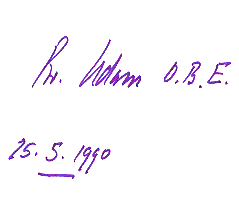Breeding the Honeybee
A Contribution to the Science of BeebreedingBy Brother ADAM
 |
Dedicated to
Prof. Dr. Ludwig ARMBRUSTER
(7.9.1886 - 4.6.1978)
in grateful remembrance
NORTHERN BEE BOOKS
Mytholmroyd : Hebden Bridge
( Out of print edition )
 |
Dedicated to
| The Honeybee — then and now |
| Nature as a Breeder |
| Results of Recent Breeding Endeavours |
| Preliminary Remarks |
| The Aims of Breeding |
| The Economic Goals in Breeding |
The Primary Qualities for Performance
|
Secondary Qualities
|
Qualities which Influence Management
|
Breeding as a means of Combating Disease
|
| Diseases of the Adult Bee |
| Diseases of the Brood |
| Evaluation of Performance |
| Breeding Procedures |
| Introduction |
| The Essential Characteristics of the Races of Bees |
| Intermissa Race Group |
| Results of the Evaluations in Relation to the Buckfast Strain |
| The Genetic Resources |
| Conclusion |
| Glossary |